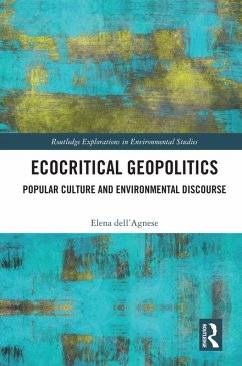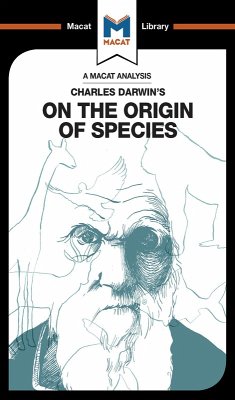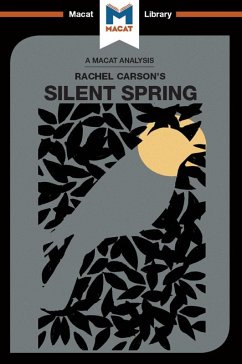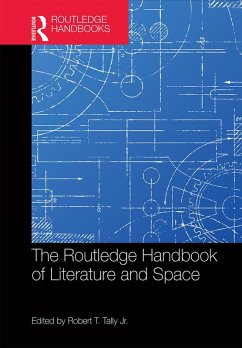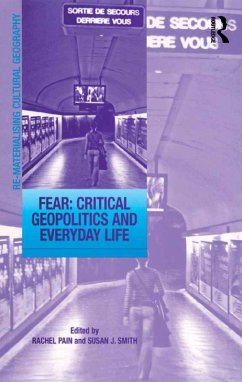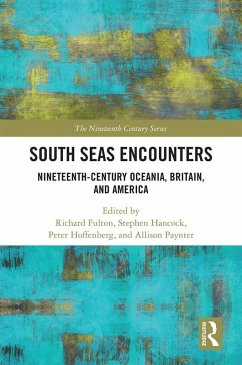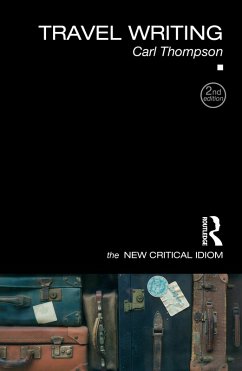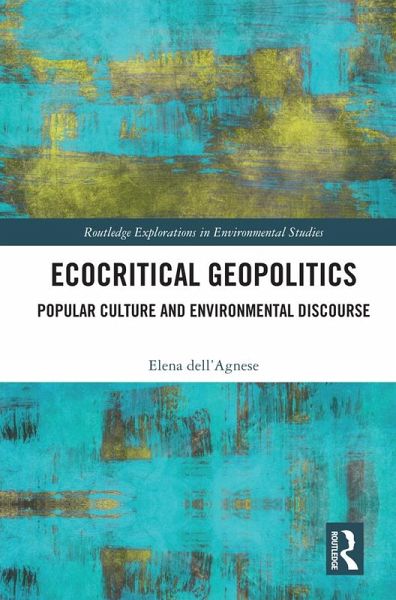
Ecocritical Geopolitics (eBook, ePUB)
Popular culture and environmental discourse
Versandkostenfrei!
Sofort per Download lieferbar
41,95 €
inkl. MwSt.
Weitere Ausgaben:

PAYBACK Punkte
21 °P sammeln!
What is the role of popular culture in shaping our discourse about the multifaceted system of material things, subjects and causal agents that we call "environment"? Ecocritical Geopolitics offers a new theoretical perspective and approach to the analysis of environmental discourse in popular culture. It combines ecocriticial and critical geopolitical approaches to explore three main themes: dystopian visions, the relationship between the human, post-human, and "nature" and speciesism and carnism.The importance of popular culture in the construction of geopolitical discourse is widely recogniz...
What is the role of popular culture in shaping our discourse about the multifaceted system of material things, subjects and causal agents that we call "environment"? Ecocritical Geopolitics offers a new theoretical perspective and approach to the analysis of environmental discourse in popular culture. It combines ecocriticial and critical geopolitical approaches to explore three main themes: dystopian visions, the relationship between the human, post-human, and "nature" and speciesism and carnism.
The importance of popular culture in the construction of geopolitical discourse is widely recognized. From ecocriticism, we also appreciate that literature, cinema, or theatre can offer a mirror of what the individual author wants to communicate about the relationship between the human being and what can be defined as non-human. This book provides an analysis of environmental discourses with the theoretical tools of critical geopolitics and the analytical methodology of ecocriticism. It develops and disseminates a new scientific approach, defined as "ecocritical geopolitics", to offer an idea of the power of popular culture in the realization of environmental discourse.
Referencing sources as diverse as The Road, The Shape of Water, Lady and the Tramp, and TV cooking shows, this book will be of great interest to students and scholars of geography, environmental studies, film studies, and environmental humanities.
The importance of popular culture in the construction of geopolitical discourse is widely recognized. From ecocriticism, we also appreciate that literature, cinema, or theatre can offer a mirror of what the individual author wants to communicate about the relationship between the human being and what can be defined as non-human. This book provides an analysis of environmental discourses with the theoretical tools of critical geopolitics and the analytical methodology of ecocriticism. It develops and disseminates a new scientific approach, defined as "ecocritical geopolitics", to offer an idea of the power of popular culture in the realization of environmental discourse.
Referencing sources as diverse as The Road, The Shape of Water, Lady and the Tramp, and TV cooking shows, this book will be of great interest to students and scholars of geography, environmental studies, film studies, and environmental humanities.
Dieser Download kann aus rechtlichen Gründen nur mit Rechnungsadresse in A, B, BG, CY, CZ, D, DK, EW, E, FIN, F, GR, HR, H, IRL, I, LT, L, LR, M, NL, PL, P, R, S, SLO, SK ausgeliefert werden.




